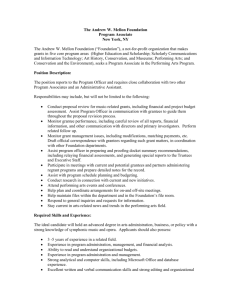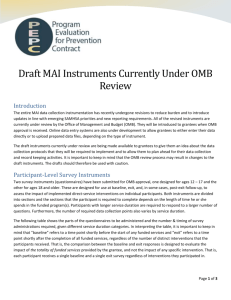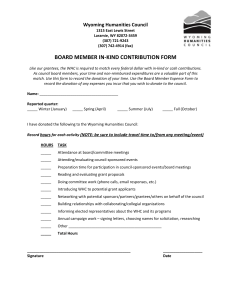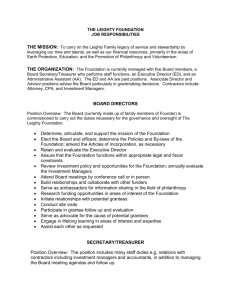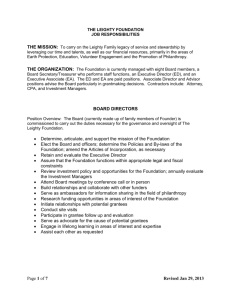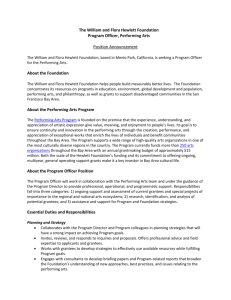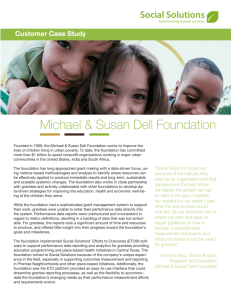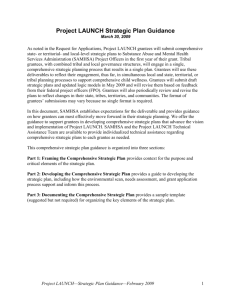Session Notes - Workforce Innovation Fund
advertisement
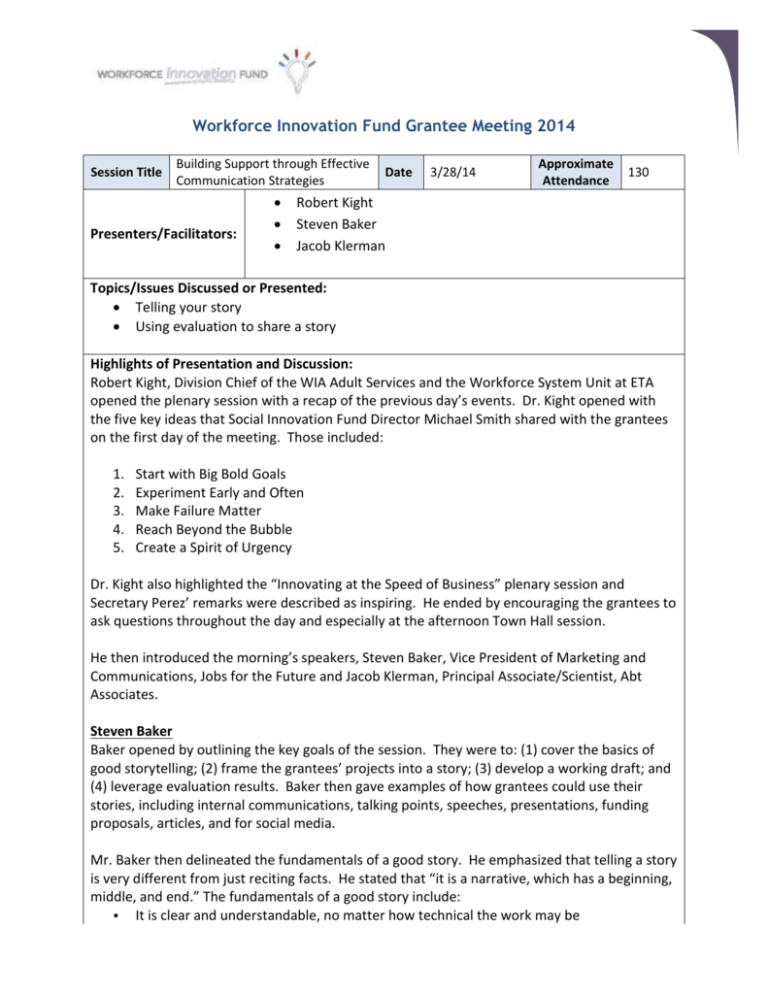
Workforce Innovation Fund Grantee Meeting 2014 Session Title Building Support through Effective Communication Strategies Presenters/Facilitators: Date 3/28/14 Approximate Attendance 130 Robert Kight Steven Baker Jacob Klerman Topics/Issues Discussed or Presented: Telling your story Using evaluation to share a story Highlights of Presentation and Discussion: Robert Kight, Division Chief of the WIA Adult Services and the Workforce System Unit at ETA opened the plenary session with a recap of the previous day’s events. Dr. Kight opened with the five key ideas that Social Innovation Fund Director Michael Smith shared with the grantees on the first day of the meeting. Those included: 1. 2. 3. 4. 5. Start with Big Bold Goals Experiment Early and Often Make Failure Matter Reach Beyond the Bubble Create a Spirit of Urgency Dr. Kight also highlighted the “Innovating at the Speed of Business” plenary session and Secretary Perez’ remarks were described as inspiring. He ended by encouraging the grantees to ask questions throughout the day and especially at the afternoon Town Hall session. He then introduced the morning’s speakers, Steven Baker, Vice President of Marketing and Communications, Jobs for the Future and Jacob Klerman, Principal Associate/Scientist, Abt Associates. Steven Baker Baker opened by outlining the key goals of the session. They were to: (1) cover the basics of good storytelling; (2) frame the grantees’ projects into a story; (3) develop a working draft; and (4) leverage evaluation results. Baker then gave examples of how grantees could use their stories, including internal communications, talking points, speeches, presentations, funding proposals, articles, and for social media. Mr. Baker then delineated the fundamentals of a good story. He emphasized that telling a story is very different from just reciting facts. He stated that “it is a narrative, which has a beginning, middle, and end.” The fundamentals of a good story include: • It is clear and understandable, no matter how technical the work may be • • • It is relatable; the story connects the work to people It is compelling; the outcomes/benefits are easily understood It is motivating; your audience wants you to succeed and they want to help you. Grantees were then allowed to work together to develop stories around their projects. The next speaker was Jacob Klerman of Abt Associates. Jacob Klerman Mr. Klerman opened his remarks by stating that the history of workforce development has produced very little evidence of program efficacy. He encouraged the grantees to think of themselves as the “vanguard.” He made the following points: Until recently, social policy in general and workforce strategies in particular have been set and funds allocated based on “plausibility” o And, rigorous impact evaluation suggests that impacts have often been mediocre Increasingly (Obama Administration’s Evidence Agenda, ED’s i3, CNCS’s SIF), we see a move towards a new and better strategy: “Evidence Based Policy” o Pilot, rigorously (impact) evaluate, replicate o Broad scale rollout only after success at earlier steps o Leading to better programs and (any and) larger impacts He emphasized to the grantees the importance of turning the burden of being on the cutting edge of this movement into a key selling point. He made the following points: In your materials, note that you are “doing the right thing” o Stepping through the tiers of evidence And, along the way, showing that: o Your program can actually implemented (i.e., a successful pilot; see third part of talk) o You are incremental tweaking your program (again, see third part of talk) o You can work constructive with an evaluator o You have good internal data systems that can support an evaluation o And, we hope building increasingly high quality evidence of impact Mr. Klerman emphasized that the grantees should ensure that their evaluators produce detailed reports that include an “Executive Summary.” He then gave them an outline of a standard executive summary. He then pointed to a detailed set of slides that delineated how evidence based policy is associated with tiered evidence. He emphasized to the grantees that they claim credit for working through the tiers of evidence, but not to overstate the strength of the evidence. Finally, he emphasized the importance of precision and impact. He encouraged grantees to determine efficacy by asking two key questions: (1) What is the impact? and (2) How sure are we about that answer? The teams then broke into an exercise which continued to the end of the session.
